Choosing the perfect linen colors for your wedding is not just about aesthetics; it's about setting the mood, reflecting your personality, and creating unforgettable memories.
With a rainbow of hues at your fingertips, the right colors can transform your venue into a breathtaking celebration of love. Whether you envision a romantic, rustic affair or a modern, chic gathering, selecting the right linens can elevate your theme and style.
Let’s dive into the art of color selection and help you create a stunning ambiance for your big day!
Key Takeaways
- Choose linen colors that align with your wedding theme and style for a cohesive look.
- Consider the venue's color palette and architectural features when selecting complementary linen colors.
- Reflect the season in linen choices, using pastels for spring or warm tones for autumn.
- Test linen colors at the venue during the event's time to ensure desired effects and transitions.
Different Types of Wedding Linens
When choosing linens for your wedding décor, you'll need to consider various types:
- Wedding Tablecloths: Choosing the right wedding table linens sets the stage for the whole look, enhancing the centerpieces and table settings.
- Napkins: They're essential for enhancing your table settings and adding an elegant touch to your wedding reception.
- Table Runners: Table runners are a versatile way to add color and texture to your wedding tables, enhancing the wedding party.
- Chair Covers and Sashes: Chair covers can be fitted for a sleek look or draped for a more relaxed vibe. Pair them with sashes made from satin, organza, or lace to add a pop of color that complements your color scheme.
- Drapes: Drapes can transform the architectural features of your space. They add softness and elegance while coordinating with your theme.
How to Choose Linen Colors for Wedding: Factors to Consider

When choosing wedding table linen colors, think about the following factors.
1. Wedding Theme and Style
To select the perfect linen colors, start by identifying your wedding theme and style. Whether you're going for a rustic, bohemian, or formal wedding theme, your linen colors should enhance and not compete with the chosen aesthetic.
Aim for a cohesive look by choosing accent colors that align with your central theme.
2. Consider the Venue
After aligning your linen colors with your wedding theme and style, consider how they'll interact with your chosen venue.
- Assess the venue's existing color palette. Doing so will help you select linen colors that complement rather than clash with the surroundings.
- Pay attention to the architectural features like columns and flooring. These features might need simpler or more elaborate linens.
- Evaluate the natural lighting, as it can affect how colors appear throughout the day.
- For outdoor weddings, earthy tones or neutrals often blend seamlessly with the natural environment.
- In contrast, beach weddings benefit from soft blues and greens that mirror the landscape.
3. Time of Day
The natural lighting at your wedding venue is crucial in how linen colors appear. For daytime weddings, opt for lighter pastel or neutral linens that reflect daylight to create a fresh, airy feel.
In contrast, evening receptions prefer richer, bolder colors like deep blues or burgundies. These wedding colors enhance the intimate setting under artificial lighting conditions.
If your celebration transitions from day to night, test linen colors at the venue during the same time of day as your event to ensure they maintain the desired effect.
4. Color Psychology
Understanding color psychology can help you choose colors that evoke the right emotions and set the perfect mood for your wedding.
Consider how different hues influence feelings: blue for calmness, red for passion, and green for growth. Integrate these insights into your wedding to create a harmonious atmosphere.
5. Personal Preferences
Your personal preferences are crucial factors to consider when selecting linen colors. Think about the hues that resonate with you and your partner. These colors can reflect your style and create an emotional connection.
Ultimately, choose linen colors that not only enhance your decor but also evoke the emotions you wish to share on your wedding day.
6. Budget Considerations
When planning your wedding, it's important to consider your budget carefully. Allocate 3-5% of the budget for linens to ensure you can get the quality you want without spending too much.
Start by comparing rental versus purchase costs for linens. Renting from a rental company often provides a wider variety of colors and styles at a lower upfront expense.
Consider the size and number of tables. Larger wedding events will need more linens, impacting the budget.
Don't forget to factor in extra expenses for specialty linens, overlays, or unique textures, which can elevate your decor but may come with higher price tags.
Popular Color Choices for the Best Wedding Linens
When selecting a perfect wedding linen, consider popular trends to create a modern and stylish atmosphere.
1. Classic Whites and Neutrals
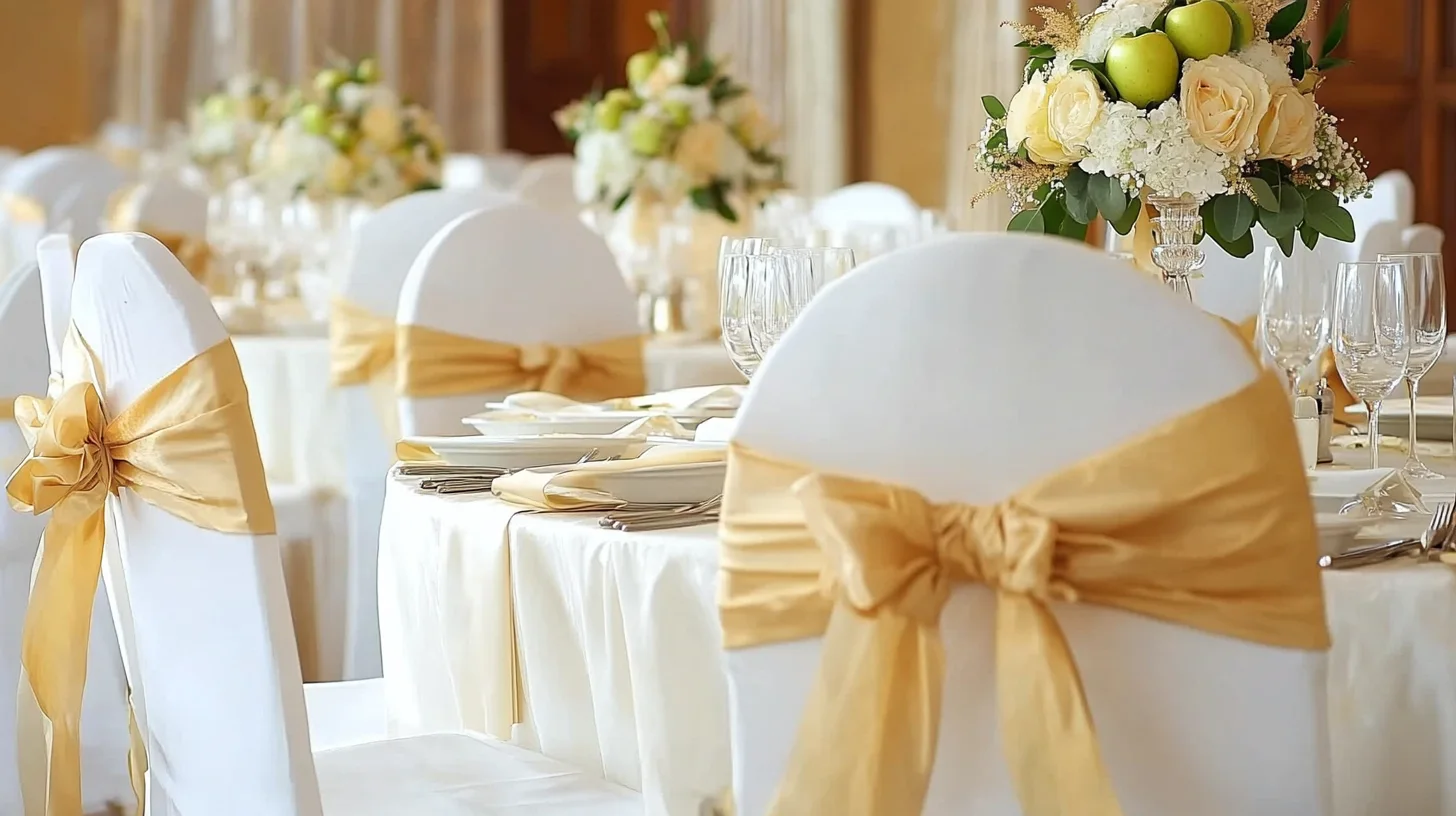
Elegant and timeless, classic whites and neutrals like ivory and cream can enhance any wedding theme. These shades are exquisite, making them perfect for any setting.
Classic whites and neutrals can easily be dressed up or down with your choice of floral arrangements and centerpieces. They're also budget-friendly, as many venues offer white or neutral linens at no extra cost.
Choosing classic whites and neutrals makes your wedding timeless and cohesive.
2. Pastels
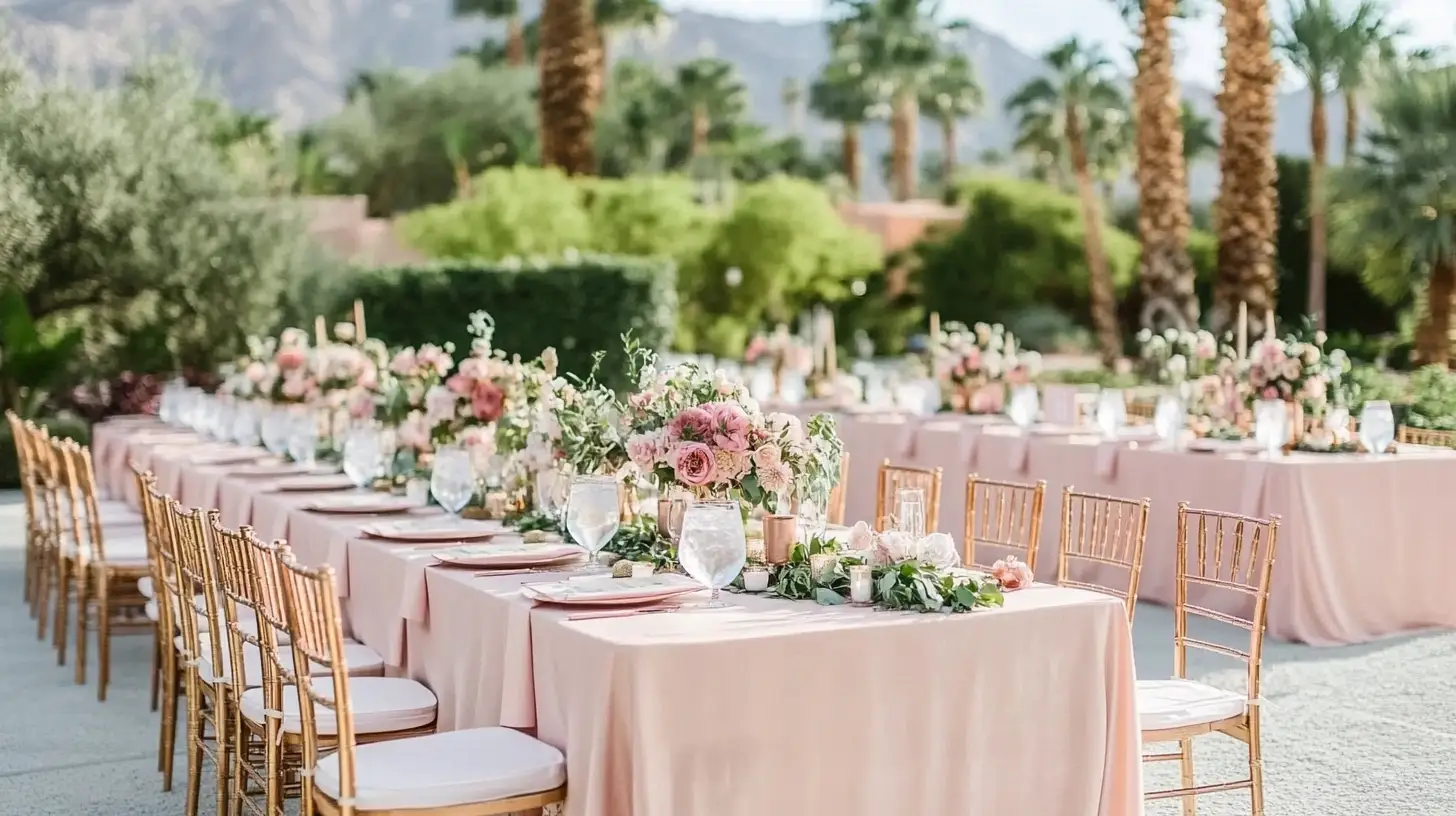
After classic whites and neutrals, let's turn our attention to pastels, which are particularly popular for spring weddings.
Pastel shades like blush pink, mint green, baby blue, and lavender evoke a sense of renewal and freshness. These soft colors are perfect for garden weddings, creating a dreamy ambiance that lets your elegant floral arrangements shine.
Your guests will appreciate the tranquil and inviting atmosphere.
3. Bold and Vibrant Colors
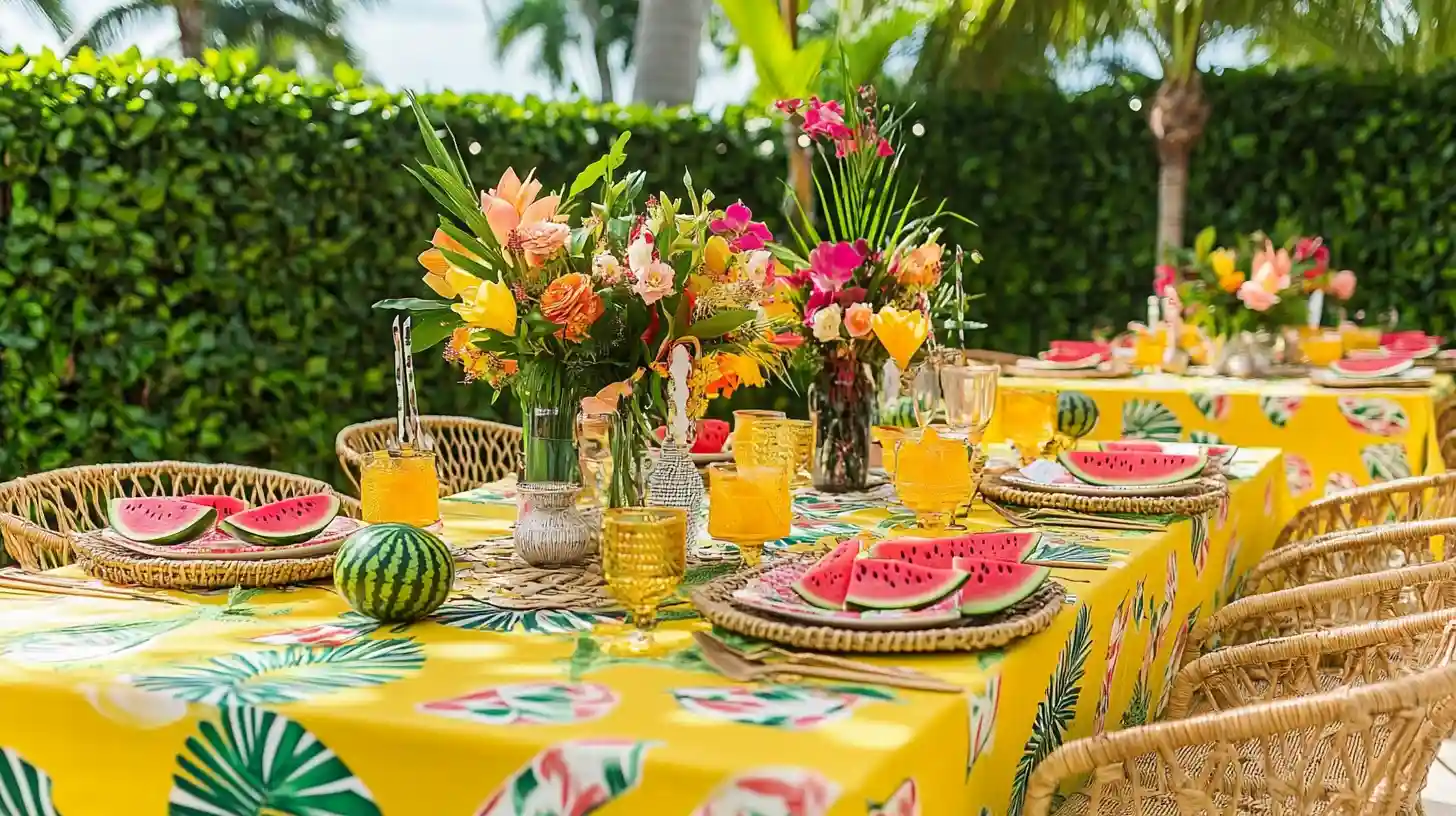
When selecting linen colors, consider how bold colors can elevate your tablescape. Combining vibrant colors with softer hues like dusty rose or pastel shades creates a balanced and visually appealing look.
Infusing energy with vibrant accent colors like coral or bright yellow can complement your primary linen choices. Remember to factor in your venue's lighting and architectural features to ensure that bold colors enhance the ambiance.
4. Metallics
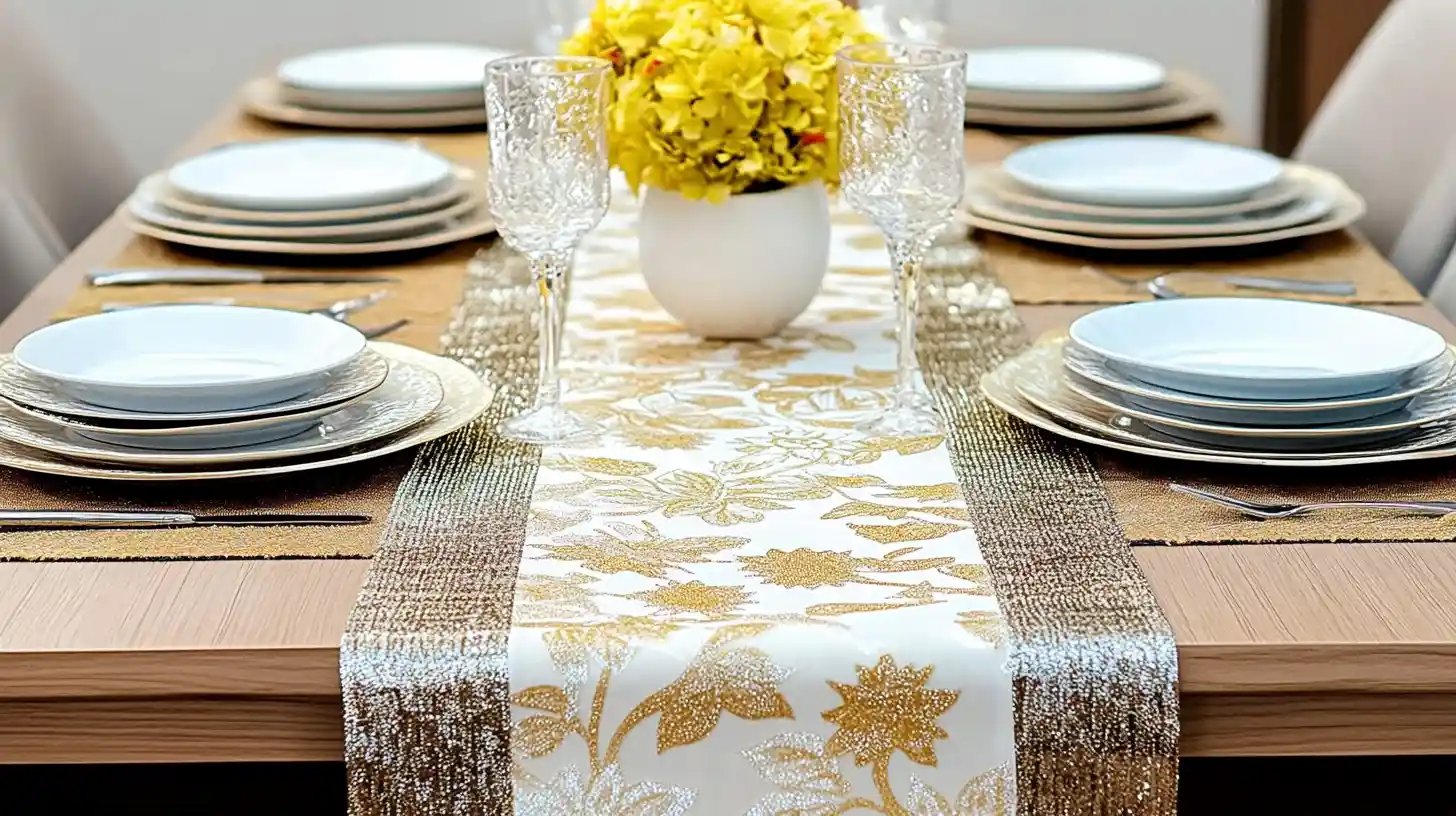
With the rise of metallic trends, adding gold, silver, or rose gold linens can bring a touch of glamour and sophistication. Incorporating metallic colors enhances the elegance and introduces visual interest.
Metallic accents can create striking contrasts, especially when paired with classic linen colors like white or deep jewel tones. Consider metallic table runners or overlays on solid linens to bring texture and depth to your tablescape.
5. Seasonal Trends
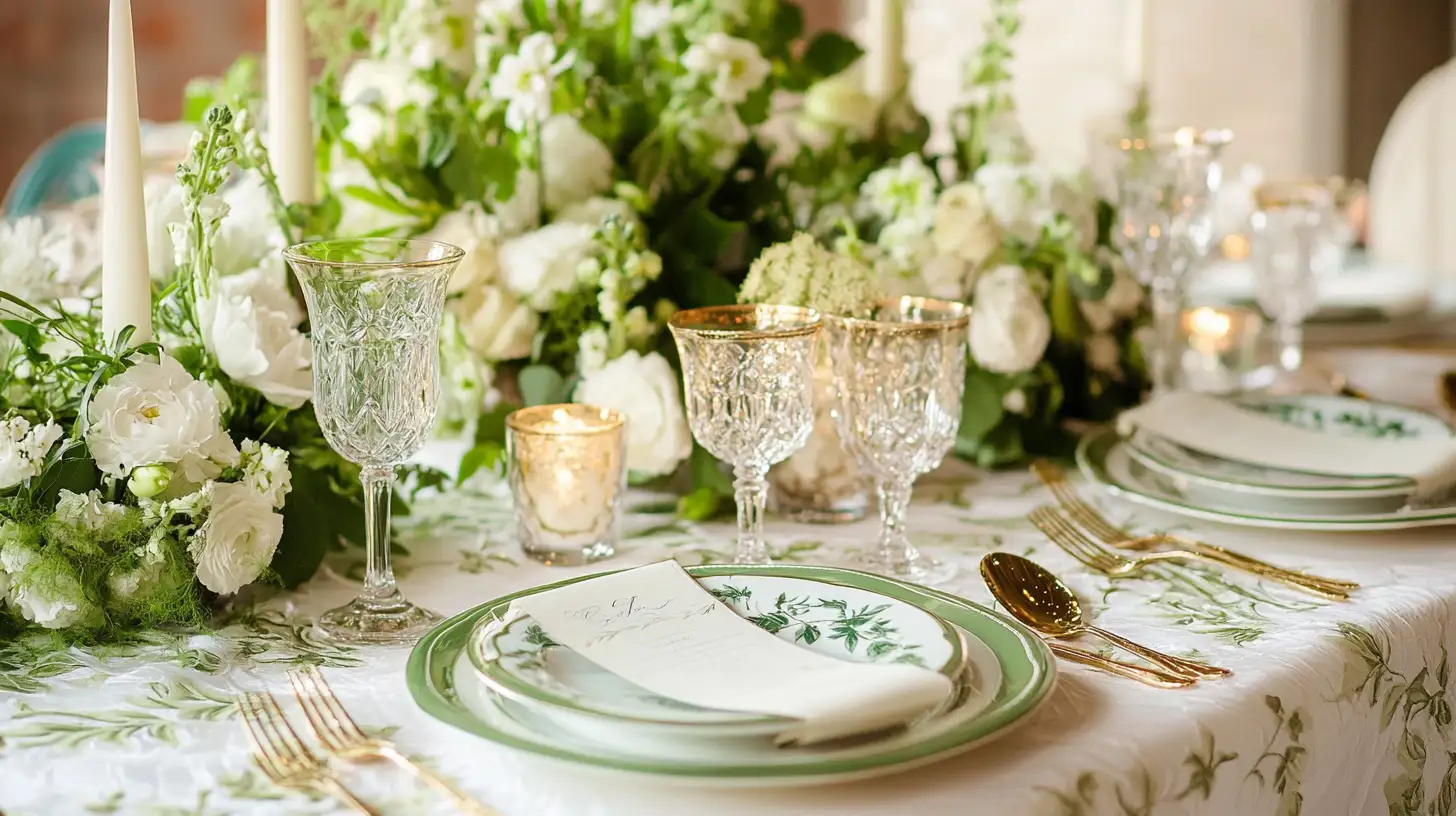
Embrace the beauty of each season by selecting linen colors that reflect the time of year. This will ensure that your wedding decor feels both timely and captivating.
- For winter weddings, select wedding linens in deep blues, emerald greens, and whites to create a magical, wintry atmosphere.
- Spring calls for pastel shades like blush pink and mint green, perfect for a colorful wedding.
- In summer weddings, opt for vibrant colors like coral, fuchsia, and sunny yellow paired with lightweight fabrics.
- Autumn weddings benefit from warm, earthy tones such as burnt orange, mustard yellow, and deep burgundy.
Mixing seasonal hues with neutral colors can achieve a balanced, stunning look.
6. Mix Patterns and Textures

Mix patterns and textures to enhance your wedding, adding depth and visual interest. This will reflect your style and the latest color trends.
Start by incorporating patterned linens, such as damask or floral designs, alongside solid-colored tablecloths. This creates a balanced look that enhances the whole aesthetic.
Then, mix soft pastels with bold accents. For example, pair dusty rose napkins with deep emerald tablecloths for an elegant contrast.
Elevate your standard linens with textured fabrics such as sequins or lace overlays to add a luxurious touch.
Conclusion
When choosing linen colors for your wedding, focus on your theme, venue, and the season to create a harmonious look.
Don't be afraid to mix patterns and textures for added visual interest. Bold colors and metallics can make a striking statement, while seasonal trends ensure your decor feels timely.
Ultimately, let your personal preferences and the emotional impact of colors guide your choices. Trust your instincts, and you'll create an unforgettable atmosphere for your special day.
Learn more fabric knowledge on the Longan Craft Blog, and dive into the fabric world with Longancraft!
FAQs
What Is the Best Color Linen for a Wedding?
You should pick linen colors that match your wedding theme and season. Classic ivory or white works for formal settings, while earthy tones suit rustic themes. Accent colors like bold napkins can add visual interest and cohesion.
How to Choose Linen for a Wedding?
Start by considering your wedding style and color scheme. Select high-quality fabrics that drape well and resist wrinkles. Ensure the linens complement your centerpieces and floral arrangements, creating a cohesive and inviting atmosphere for your guests.
What Color Should the Table Cloth Be at a Wedding?
Consider your theme and venue when deciding on tablecloth colors for your wedding. Classic weddings look elegant with white or ivory, while rustic settings benefit from earthy tones. Ensure the linens enhance your decor.
When Should I Get Wedding Linens?
You should secure your wedding linens at least six months before your wedding date. Three months prior, confirm your final guest count and table arrangements. This timeline ensures availability, allows for customizations, and avoids last-minute stress.


0 comments